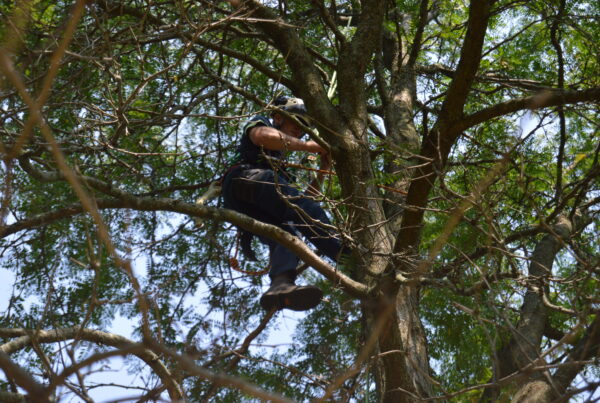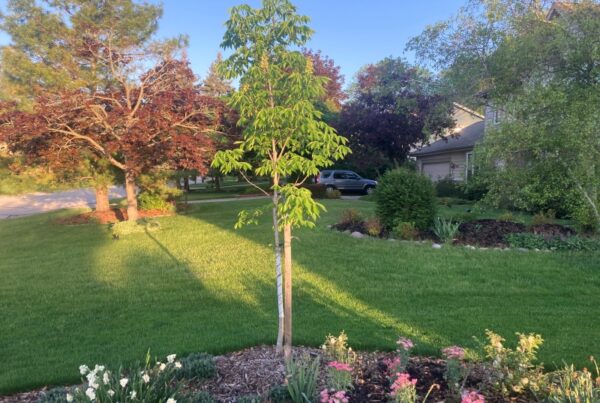Winter has finally arrived in southeastern Wisconsin.
While the majority of trees and woody plants can adapt well to freshly fallen snow, the Tree Care Industry Association (TCIA) offers the following reminders about damage to trees during strong winter snowstorms:
The type of snowfall – Heavy, wet snow can damage trees and woody shrubs and weigh down their branches. This can cause them to bend, break or split, which could lead to tree failure of just a few limbs or the entire tree uprooting and taking a fall.
Tree structure and form – It’s necessary to pay attention to and monitor some tree species that are more vulnerable during heavy snowfall. A tree with solid, right-angle branches can withstand snow and ice better than a tree with narrow, more vertical branch curves.
Here are some examples of trees that may require more observation during harsh winter weather:
- Broadleaf evergreens – These woody plants are a species that can’t handle snow weight as well as coniferous evergreens.
- Conifers growing in wide open spaces – These trees have long spreading branches and are more likely to sustain damage from heavy snowfall than narrower trees with shorter branches
- The common arborvitae – This evergreen grows tall, with many stemmed branches that are low to the ground. It does not manage well in excess snow, especially when planted and grown close to homes or buildings. Any amount of snow piling up on a nearby roof could easily fall on them, causing harm or destruction.
So, keep an eye on the trees gathered on your property and look for signs of distress. If you experience tree failure or a hazardous situation on your landscape following a snowstorm, it’s best to consult with a professional arborist for next steps. Contact us at American Tree Experts for a consultation.




